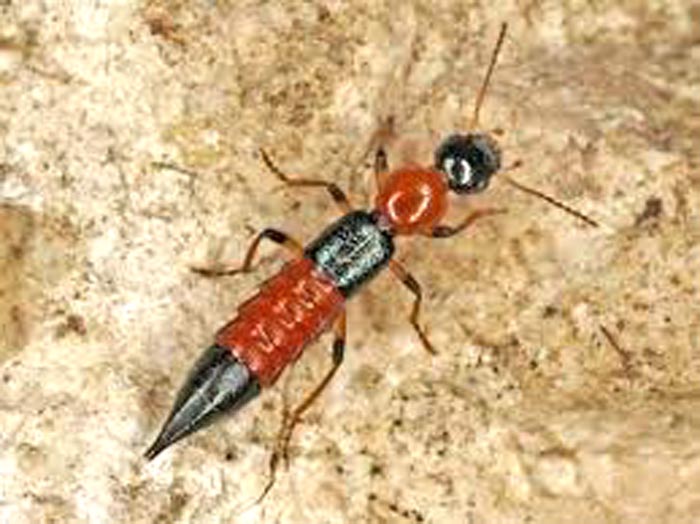Nairobi fly, acid-bug, Nyerere, are all names given to the black and red stripped bug. Its actual name is Paederus Sabaeus, and besides the Paederus dermatitis (skin irritation), the bug can hurt a lot more.-By Joanna Nganda
The bug lives in bushes surrounding houses, in which it hides during the day and at night it gets out, attracted by fluorescent lights. The places where those small bugs are mostly seen are toilet seats and ceilings from where they fall on their victims. Although they don’t bite or sting, they contain a substance that causes painful blisters. Doctor Elie Mupera, Dermatologist, tells us more about the bug. “It’s really not recommended to slap a bug while it is on the skin”, says Dr. Mupera, “and this rule applies even more to the acid-bug. You should always blow it off or gently get rid of it. However, if you slap it inadvertently, you should immediately run water on the area and repeatedly wash it with a lot of soap. An anti-inflammatory cream can be applied on the affected area to ease any eventual pain.” Once gone, the blisters leave dark spots on the skin. Daniella, a victim, knows it all too well, “when I woke up in the morning, my right eye was painful and the skin was peeling off, very quickly I figured out it was the Nairobi Fly. Today, a month later, I still have a dark spot where the blister was.”
When located on the face, women get the bad initiative to use bleaching products on the area, believing that it will clear the spot.
“This is a very bad idea”, says Dr. Mupera, “I have seen cases where the skin has worsened due to these bleaching creams that are already very bad for the skin. There is no miracle cream or product to make the dark spot disappear, the skin is a living organ and it renews itself constantly. Time is the only solution.” The painful blisters caused by the Nairobi fly are infamously known and feared, and yet, Dr Mupera tells us that the bug can cause serious health conditions. “Again, the skin is a living organ and it protects us from external aggressions. The skin is capable to absorb substances applied on it, and in this case the acid-bug contains a vesicant toxin called Pederin”, he explains. The Pederin crosses the skin and then penetrates the blood stream. This causes mild discomfort such as vomiting and diarrhea but in the worst cases the bug’s toxin can affect the liver or kidneys sometimes causing kidney failure. “I haven’t seen any of these serious intoxication cases but we know they have been reported, and they are specified in medical literature. So yes, this bug can cause serious harm.” Dr. Mupera advices people to be careful and prevent themselves from the bug by clearing all the bushes in which the bug might hide and/or use pesticides to try and control their colonies.
















 IWACU Open Data
IWACU Open Data

